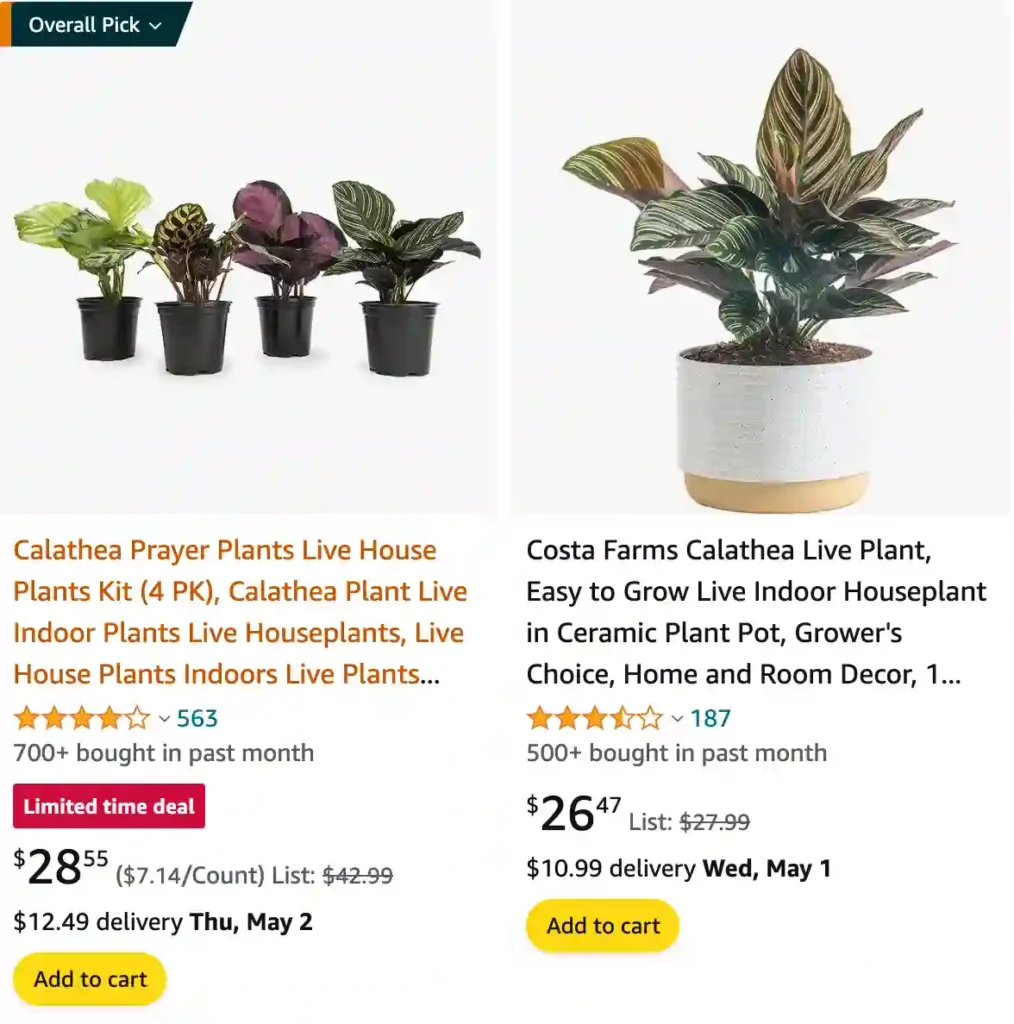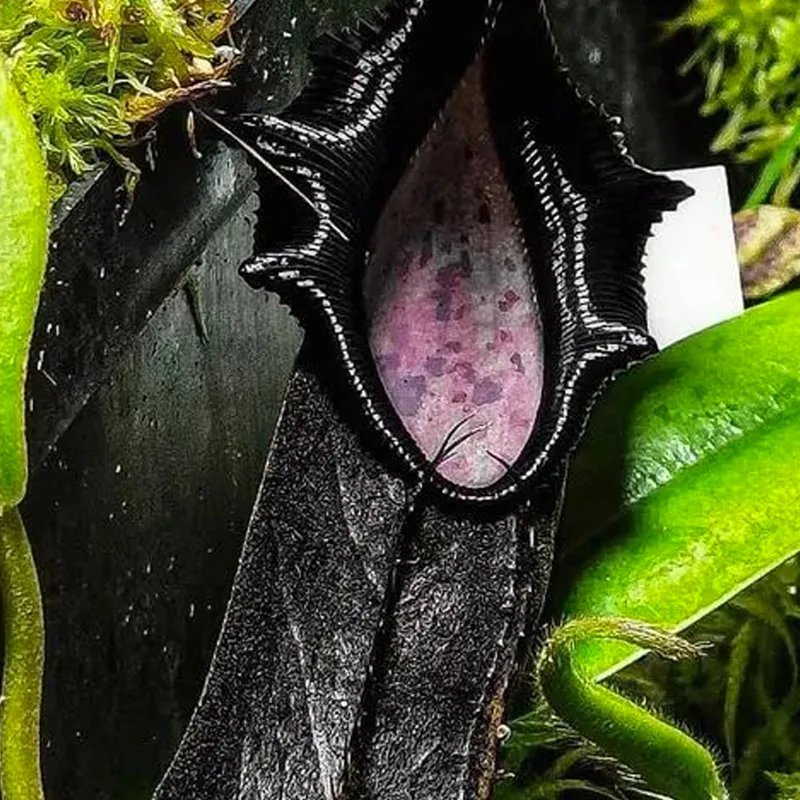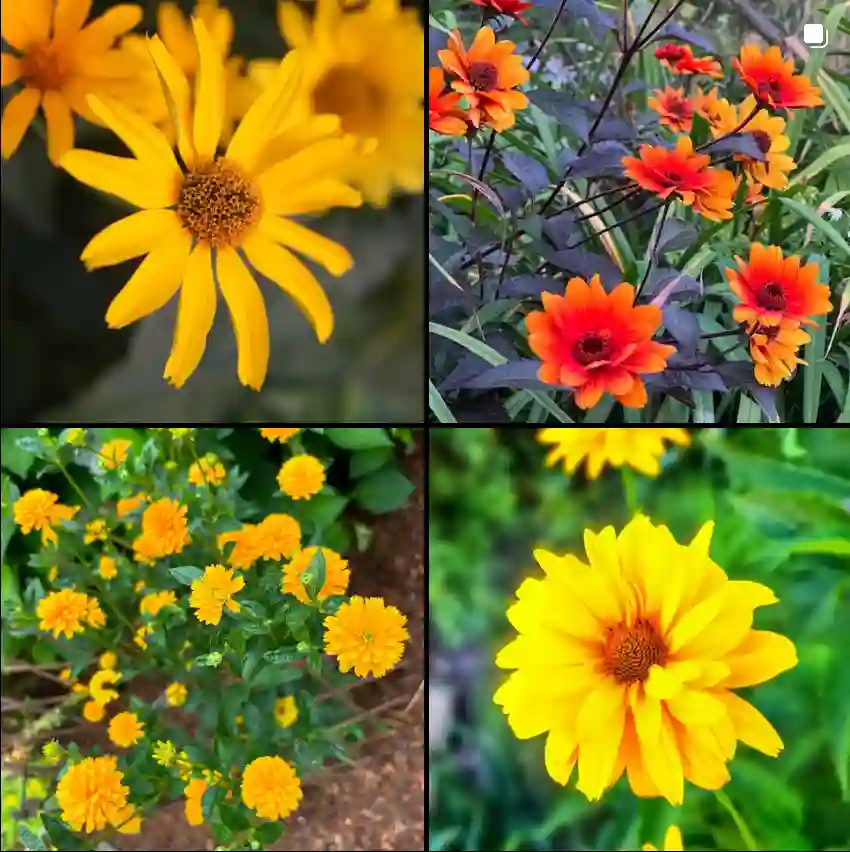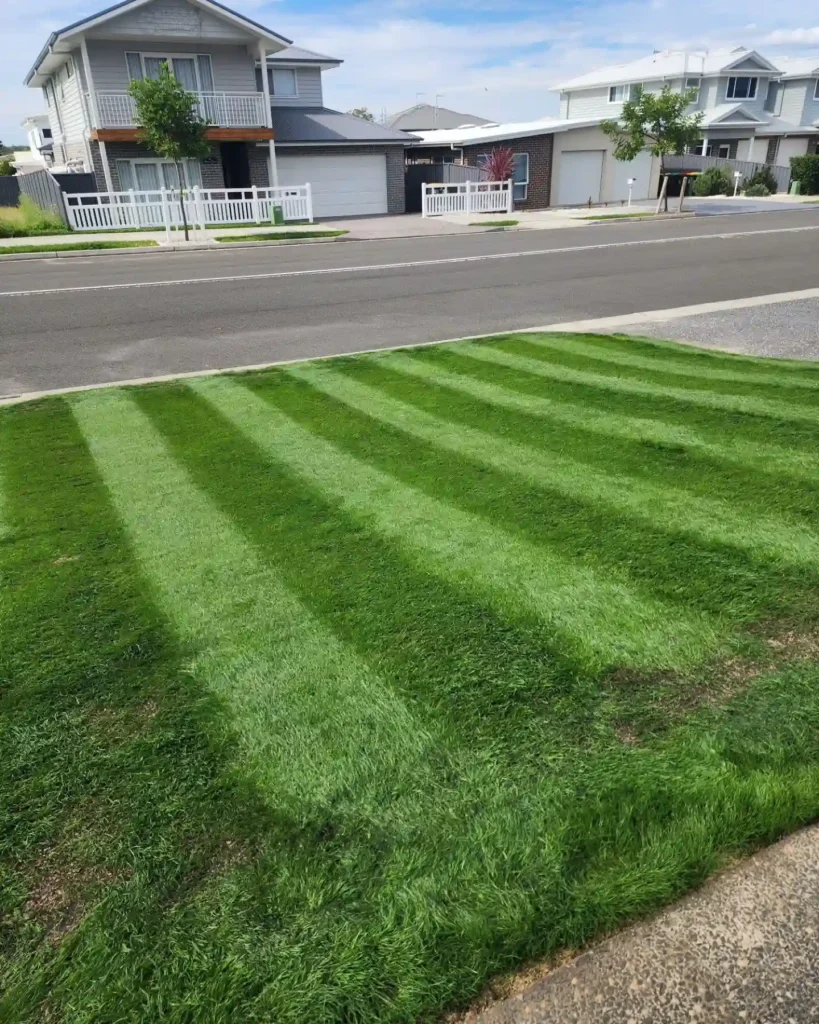
January 29 – Calathea
“Calathea, the prayer plant, represents January 29.”
You are spiritual and intuitive, finding beauty in the small details of life. Your creativity and depth make you truly remarkable.
Calathea: A Love Affair with Living Art
Hi, I’m Ferb Vu, and I have a confession. I’m utterly captivated by Calathea from the Marantaceae family. These aren’t your average houseplants; they’re living masterpieces, each leaf a canvas painted with intricate patterns and vibrant colors. My fascination began innocently enough, with a single Calathea Medallion gracing my bookshelf. But soon, I found myself drawn into their world, captivated by their diversity and the unique personality of each species.
Now, my home is a veritable Calathea sanctuary, a testament to my growing obsession. I’ve spent countless hours studying their needs, marveling at their growth, and even propagating new plants from cuttings. It’s been a journey of learning and discovery, and I’m excited to share my passion with you.
Why Calatheas?
What is it about these plants that draws me in? First and foremost, it’s their stunning foliage. From the bold stripes of the Zebrina to the intricate mosaics of the Network, each Calathea species boasts a unique design that’s as captivating as any work of art. The leaves themselves are often velvety to the touch, adding another layer of sensory delight.
But there’s more to Calatheas than just looks. They’re also known for their fascinating behavior. Like many members of the Marantaceae family, Calatheas exhibit nyctinasty, a phenomenon where the leaves move throughout the day in response to light. In the morning, the leaves unfold to catch the sun’s rays, and in the evening, they rise up like praying hands, hence their nickname “prayer plants.” It’s a subtle but mesmerizing dance that never ceases to amaze me.
A Diverse Genus
While many species were recently reclassified into the genus Goeppertia, the Calathea genus still boasts a remarkable variety. Here are:
- Calathea anderssonii H.Kenn.
- Calathea anulque H.Kenn. Plant FAQs: Calathea Anulque
- Calathea asplundii H.Kenn.
- Calathea barryi H.Kenn.
- Calathea brenesii Standl.
- Calathea caesariata H.Kenn.
- Calathea calderon-saenzii H.Kenn. & M.Serna
- Calathea carlae H.Kenn.
- Calathea casupito (Jacq.) G.Mey.
- Calathea chiriquensis H.Kenn.
- Calathea cofaniorum H.Kenn.
- Calathea confusa H.Kenn.
- Calathea congesta H.Kenn.
- Calathea croatii H.Kenn.
- Calathea crotalifera S.Watson
- Calathea erythrolepis L.B.Sm. & Idrobo
- Calathea fredgandersii H.Kenn.
- Calathea fredii H.Kenn.
- Calathea galdamesiana H.Kenn. & Rod.Flores
- Calathea gentryi H.Kenn.
- Calathea grandifolia Lindl.
- Calathea guzmanioides L.B.Sm. & Idrobo
- Calathea hagbergii H.Kenn.
- Calathea harlingii H.Kenn.
- Calathea inscripta (W.Bull) N.E.Br.
- Calathea ischnosiphonoides H.Kenn.
- Calathea jondule H.Kenn. & Hammel
- Calathea lanibracteata H.Kenn.
- Calathea lanicaulis H.Kenn.
- Calathea lasiostachya Donn.Sm.
- Calathea lateralis (Ruiz & Pav.) Lindl.
- Calathea latrinotecta H.Kenn.
- Calathea lutea (Aubl.) E.Mey. ex Schult.
- Calathea marantina (Willd. ex Körn.) K.Koch
- Calathea monstera H.Kenn.
- Calathea multispicata H.Kenn. & M.Serna
- Calathea neillii H.Kenn.
- Calathea neurophylla H.Kenn.
- Calathea nitens (W.Bull) Ender
- Calathea oscariana H.Kenn.
- Calathea platystachya Standl. & L.O.Williams
- Calathea pluriplicata H.Kenn.
- Calathea plurispicata H.Kenn.
- Calathea ravenii H.Kenn.
- Calathea recurvata H.Kenn.
- Calathea retroflexa H.Kenn.
- Calathea rubribracteata H.Kenn.
- Calathea shishicoensis H.Kenn.
- Calathea similis H.Kenn.
- Calathea spiralis H.Kenn.
- Calathea striata H.Kenn.
- Calathea tarrazuensis H.Kenn.
- Calathea timothei H.Kenn.
- Calathea toroi S.Suárez
- Calathea trianae L.B.Sm. & Idrobo
- Calathea utilis H.Kenn.
- Calathea velutinifolia H.Kenn.
- Calathea verruculosa H.Kenn.
- Calathea yawankama H.Kenn.
Is calathea toxic to cats?
I remember when I first brought home my beautiful calathea plant, I was so excited to add some greenery to my space. But then I started worrying about my cat. After doing some research and speaking to my vet, I learned that calathea isn’t toxic to cats, which was such a relief. However, I still make sure to keep it out of her reach just to be extra safe, because she’s always curious and I don’t want to take any chances with her health.
How to propagate calathea?
Propagation can be such a rewarding experience, especially with plants like calathea! When I wanted to propagate mine, I opted for division. First, I carefully removed the plant from its pot and gently separated the root ball into smaller sections, making sure each had some healthy roots and foliage. Then, I planted each section into its own pot filled with well-draining soil, ensuring they were kept consistently moist but not waterlogged. I placed them in a warm, humid spot with indirect light, and within a few weeks, I started seeing new growth. It’s amazing to watch them thrive and grow into new plants!
How often to water calathea?
Finding the right watering routine for my calathea has been a bit of trial and error, but I think I’ve got the hang of it now. I’ve found that keeping the soil consistently moist but not soggy works best. I typically water my calathea about once a week, but I always make sure to check the soil moisture first by sticking my finger about an inch into the soil. If it feels dry, then it’s time to water. I also mist the leaves regularly to maintain humidity, which my calathea seems to love. Overall, I’ve learned that it’s all about finding that balance to keep my plant happy and healthy.
Is calathea toxic to dogs?
When it comes to my furry friends, their safety is always a top priority for me. I remember being concerned about whether my calathea plant could harm my dog. After doing some research and consulting with my veterinarian, I learned that calathea isn’t considered toxic to dogs, which was a huge relief. However, just like with my cat, I still make sure to keep it out of my dog’s reach to prevent any accidental nibbling. It’s all about taking those extra precautions to ensure their well-being.
How to care for calathea plant?
Caring for my calathea has become a delightful part of my routine, though it did take some trial and error to figure out what works best. I’ve found that providing it with indirect light is key – too much direct sunlight can scorch its delicate leaves. I also make sure to keep the soil consistently moist, but not soggy, and I use distilled or filtered water to avoid any build-up of chemicals. Maintaining a humid environment by misting its leaves or placing it near a humidifier has also been beneficial. Regularly dusting its leaves and occasionally wiping them down with a damp cloth helps keep them clean and healthy. Overall, it’s all about creating the right environment for my calathea to thrive, and seeing its vibrant foliage brings me so much joy.
Does calathea like to be root bound?
From my experience, calathea plants generally prefer to have a bit of space to stretch out their roots rather than being tightly root bound. While they do like to have some room to grow, I’ve found that they also don’t appreciate being in excessively large pots, as this can lead to soil staying too wet and potentially causing root rot. When repotting my calathea, I usually choose a pot that’s just slightly larger than its current one, allowing for some growth but not overwhelming it with too much space. This seems to strike the right balance for my plant, keeping it happy and healthy.
How to pronounce calathea?
The pronunciation of “calathea” is “kuh-LAY-thee-uh.”
Why are my calathea leaves curling?
Ah, I’ve had that experience with my own calathea. Leaf curling in calathea can happen for a few reasons, but it often indicates that something isn’t quite right with its environment. One common cause is insufficient humidity. Calatheas are native to tropical regions and thrive in high humidity environments. If the air in your home is too dry, the plant may respond by curling its leaves to conserve moisture. I’ve found that misting the leaves regularly or placing a humidifier nearby can help maintain the humidity levels my calathea prefers. Additionally, fluctuations in temperature or light intensity, overwatering, or underwatering can also lead to leaf curling. It’s all about observing your plant and its surroundings to identify the issue and make the necessary adjustments to help it thrive.
Is a prayer plant a calathea?
While both prayer plants (Maranta spp.) and calatheas (Calathea spp.) are part of the Marantaceae family and share similar characteristics, they are distinct genera. However, they are often confused due to their similar appearance and behaviors. Both plants have fascinating foliage that opens and closes in response to light, hence the name “prayer plant.” While prayer plants and calatheas have similar care requirements and are appreciated for their ornamental foliage, they have some differences in leaf shape, pattern, and growth habits. Overall, they are closely related but are separate plant species.
Why is my calathea drooping?
Experiencing drooping in a calathea can be worrying, but it’s usually a sign that something in its environment needs attention. One common reason for drooping is underwatering. Calatheas prefer consistently moist soil, so if the soil has dried out too much, the plant may droop as a response to stress. However, overwatering can also lead to drooping, as it can cause root rot, preventing the roots from properly absorbing water. Another possibility is inadequate humidity. Calatheas thrive in humid environments, so if the air in your home is too dry, the plant may droop as a result. I’ve found that misting the leaves or using a humidifier can help alleviate this issue. Lastly, fluctuations in temperature or light intensity can also cause drooping. It’s essential to assess your plant’s watering schedule, humidity levels, and light conditions to determine the cause of the drooping and make any necessary adjustments to help your calathea thrive.
When to repot calathea?
Knowing when to repot your calathea can depend on a few factors, but a good rule of thumb is to consider its growth and the condition of its current pot. Typically, I aim to repot mine every year or two in the spring when it’s entering its active growing season. Signs that it may be time to repot include roots becoming visible at the surface of the soil, roots circling the bottom of the pot, or if the plant seems to be outgrowing its current container. Additionally, if I notice that the soil is drying out too quickly after watering or if there are signs of root rot, such as yellowing or wilting leaves, it may indicate that the plant needs a larger pot with fresh soil. Repotting allows the plant to have more space for growth and can refresh the soil, promoting healthy root development and overall plant health.
Why is my calathea turning yellow?
Seeing yellowing leaves on a calathea can be concerning, but it’s usually a sign that something in its environment needs adjustment. One common reason for yellowing leaves is overwatering, which can lead to root rot. Calatheas prefer consistently moist but not waterlogged soil, so if the roots are sitting in soggy conditions, they may start to rot, causing the leaves to turn yellow and wilt. On the other hand, underwatering can also cause yellowing leaves, as the plant may not be receiving enough moisture to sustain healthy growth. Another possibility is inadequate light – while calatheas prefer indirect or filtered light, too little light can result in yellowing leaves. Additionally, fluctuations in temperature or humidity levels can stress the plant and lead to yellowing foliage. By assessing your plant’s watering schedule, light exposure, and environmental conditions, you can identify the cause of the yellowing and take steps to address it, such as adjusting your watering routine, improving drainage, or providing more consistent humidity.
How big do calathea plants get?
The size of a calathea plant can vary depending on the species and growing conditions, but in general, they tend to be moderate-sized houseplants. Most calatheas typically grow to be around 1 to 2 feet tall and wide, though some varieties may stay smaller or grow larger. The size of the plant can also be influenced by factors such as light, humidity, and the size of its container. With proper care and optimal conditions, calatheas can develop lush foliage and reach their full growth potential, adding a beautiful touch to any indoor space.
Can calathea grow outside?
While calatheas are typically grown as houseplants due to their preference for warm, humid environments, some varieties can be grown outdoors in suitable climates. In tropical regions with consistently warm temperatures and high humidity, such as USDA hardiness zones 10-11, certain calathea species may thrive when planted outdoors in shaded or partially shaded areas. However, it’s essential to consider factors such as temperature, humidity, and light conditions when deciding whether to grow calatheas outside. Additionally, calatheas are sensitive to cold temperatures and frost, so they should be protected from chilly weather or brought indoors during colder months in temperate climates.
Does calathea like humidity?
Absolutely, calatheas love humidity! Originating from tropical regions, they thrive in environments with high humidity levels. Adequate humidity helps keep their foliage vibrant and healthy, preventing issues like leaf curling or browning. If the air in your home is dry, especially during the winter months when indoor heating can reduce humidity levels, you might notice your calathea reacting negatively, such as with drooping leaves or browning edges. To maintain the ideal humidity for your calathea, consider placing a humidifier near the plant, grouping it with other plants to create a microclimate, or misting its leaves regularly. These measures can help mimic its native environment and keep your calathea happy and thriving.
If i die, water my plants!



